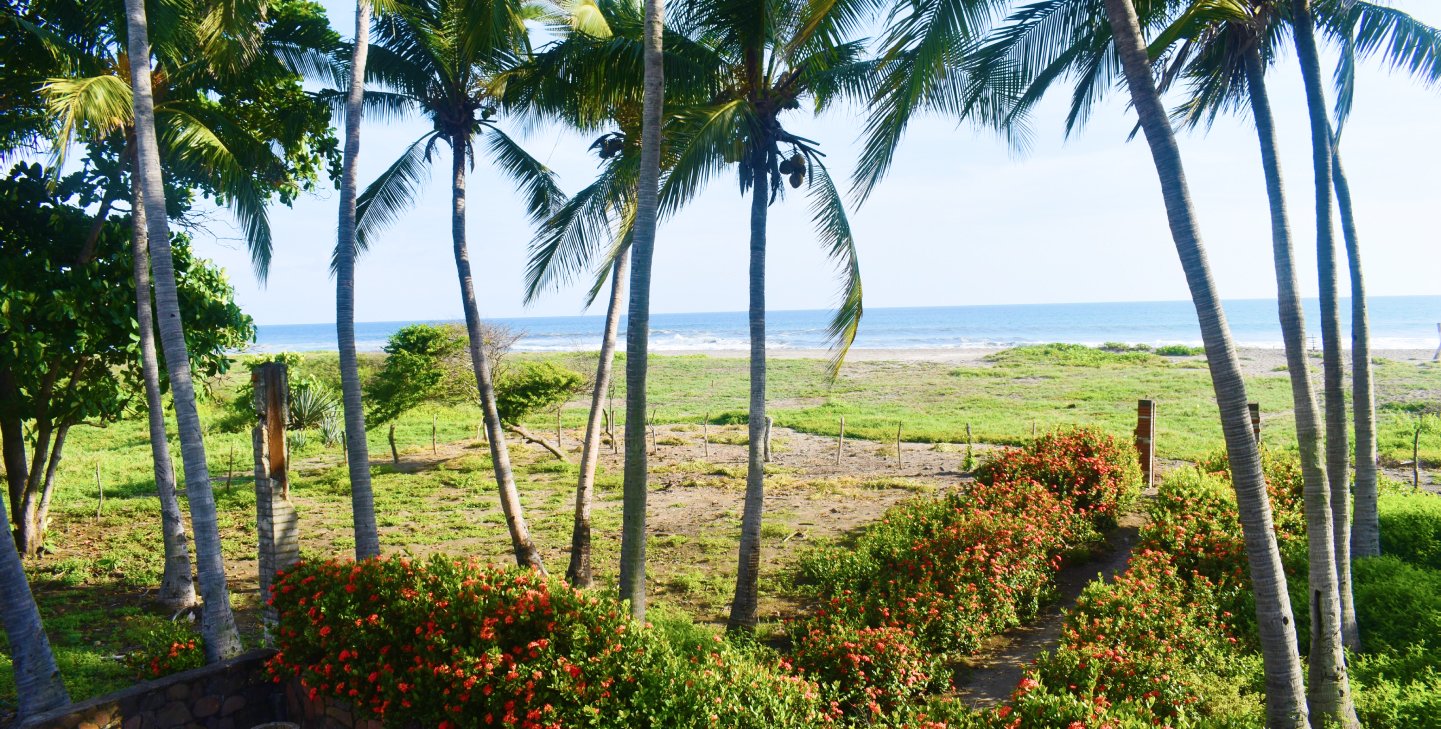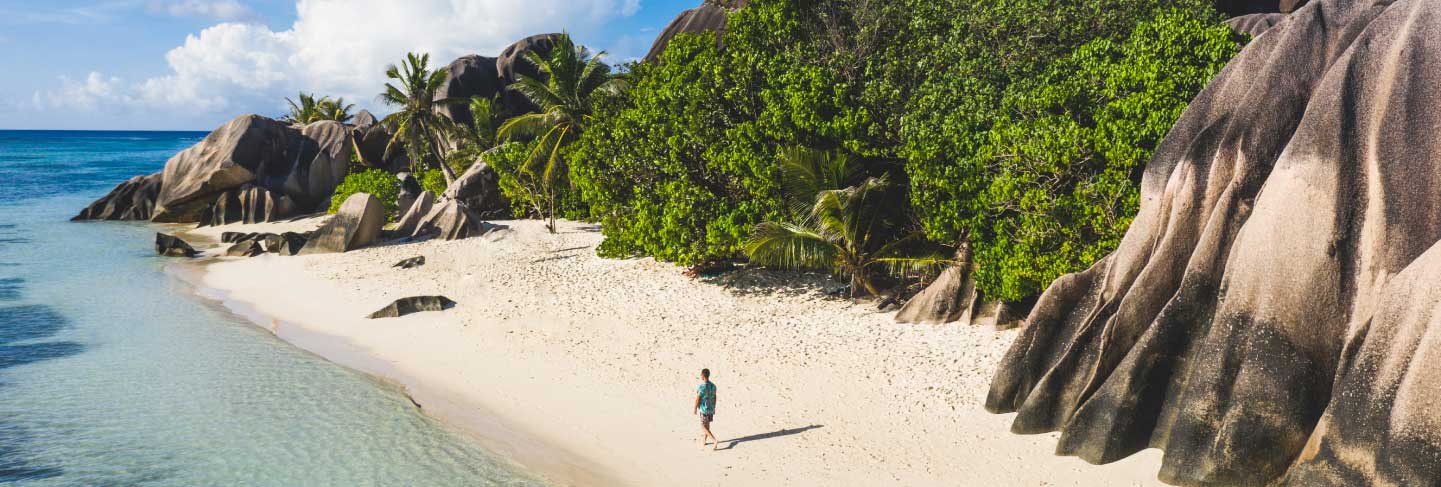Volunteer in Nicaragua
Help conserve endangered sea turtles along Nicaragua’s tropical coastline.
Contribute to coastal and marine conservation in Poneloya, Nicaragua, where hawksbill, green, leatherback and olive ridley sea turtles nest seasonally. Learn to conduct beach patrols, observe egg laying and assist with nest relocation, hatchery maintenance and baby sea turtle monitoring. Engage in meaningful conservation work along one of Nicaragua’s most secluded and untouched beaches.
Head to Nicaragua’s tropical Pacific coast, along one of the country’s most pristine stretches of coastline. This area is characterised by its uniquely contrasted palm-lined beaches, mangrove estuaries and volcanic landscapes.
These landscapes boast a vibrant biodiversity, including seasonally nesting hawksbill, green, leatherback and olive ridley sea turtles. The ocean and land host resident and migratory species, including humpback whales, pantropical spotted dolphins, bottlenose dolphins, iguanas, small mammals and over 80 species of birds!
Through volunteer work in Nicaragua, you’ll gain hands-on marine conservation experience while making lifelong memories in one of the country’s most beautiful locations.
Filter programs
Contribute to sustainable conservation projects led by experts.
Use your unique skills and expertise to support conservation projects.
The adventure of a lifetime while making an impact with a group of like-minded teens.
Generate solutions to help solve conservation challenges through research projects.
Turn your passion into your profession with a three-month placement at an NGO.
Our base is located on Nicaragua’s Pacific coast, on the scenic peninsula of Los Brasiles (lohss brah-SEE-lehs). Los Brasiles boasts stunning coastal views, with expansive golden sands and clear waters.
To get to Los Brasiles, you’ll take a road trip from Leon to Poneloya, the nearest town to our base. The journey passes through lush tropical landscapes and beautiful coastal scenery. From Poneloya, head to the jetty for a scenic boat ride across the river.
Our base is just 50 metres from the beach, with a restaurant and bar in the area. Poneloya, on the other side of the river offers a laid-back atmosphere, local eateries, vibrant markets and active fishing ports.
Nicaragua, the largest country in Central America, shares borders with Honduras to the north and Costa Rica to the south. It’s a land of diverse landscapes, from volcanic terrains to stunning beaches and lush rainforests. Positioned between the Pacific Ocean and the Caribbean Sea, Nicaragua offers a wealth of natural beauty and cultural heritage to explore.
The closest town is Leon, steeped in 500 years of colonial history with a wealth of attractions for visitors to explore. Its colonial streets offer landmark sites such as the UNESCO-listed Leon Cathedral and Ruben Dario Museum.
While in Nicaragua, there’s no shortage of exciting adventures and relaxing getaways to experience. Thrill-seekers have the chance to surf down the volcanic slopes of Cerro Negro, a two-hour drive from Poneloya. This unique activity, known as volcano boarding, is an adrenaline-pumping experience you won’t find anywhere else in the world.
For a more relaxed getaway, head to the Corn Islands in the Caribbean for beautiful beaches and vibrant coral reefs. San Juan del Sur is another fantastic spot known for its laid-back vibe and excellent surfing opportunities. Take a stroll through Granada’s colonial streets to admire its colourful architecture and stunning views of Lake Nicaragua.
If you’re up for some hiking and nature exploration, Ometepe Island offers towering volcanoes and lush rainforests. And if you’re in need of some downtime, unwind by the tranquil waters of Laguna de Apoyo, Nicaragua’s largest volcanic lagoon.
We offer one volunteer opportunity in Nicaragua, our sea turtle conservation and nest monitoring volunteer program in Poneloya.
Nicaragua’s coastal and marine ecosystems play a crucial role for marine turtles in the Americas. Along its 400-kilometre Pacific coast, Nicaragua hosts globally significant populations of the critically endangered hawksbill and Eastern Pacific leatherback turtles. Nicaragua is home to two of the world’s nine olive ridley “arribada” mass nesting beaches. An “arribada” is a unique nesting phenomenon where thousands of female turtles come ashore simultaneously to lay their eggs.
Its waters are also home to a diverse range of sealife, from pantropical spotted dolphins to humpback whales, fish, sharks, rays, and more.
Through comprehensive training, participants learn how to monitor, relocate, protect and collect data on threatened and endangered sea turtles. Activities might include night beach patrols, observing egg laying, assisting with nest relocations, monitoring hatching and release, and updating databases.
With a focus on marine conservation, this program is aligned with several UN Sustainable Development Goals, including Quality Education (Goal 4), Climate Action (Goal 13), Life Below Water (Goal 14) and Partnerships for the Goals (Goal 17).
Irresponsible tourism often has negative impacts on conservation, which is why our goal with this project is to expand and amplify successful conservation tourism efforts in Nicaragua.
Breaking from traditional concepts, our conservation-centred tourism model promotes community engagement, awareness building, responsible travel and creating stewards of the natural environment.
Part of this approach includes employing local fishermen turned turtle heroes, who are active in protecting the vulnerable and endangered species that frequent our shores.
Which languages are commonly spoken in Nicaragua?
Spanish is the most commonly spoken language. While Spanish skills are recommended they are not necessary. We also welcome participants who speak only conversational English. Training and activities are conducted in a combination of English and Spanish, to accommodate all participants.
What is the weather like in Nicaragua?
The dry season is from November to May. The rainy season is from June to October, with the wettest months being September and October.
How can I stay in touch with friends and family back home?
While Wi-Fi is not available on site, there is excellent phone signal. We recommend getting a local SIM card from providers like Tigo or Claro on arrival. Wi-Fi can be conveniently accessed at a nearby eco-lodge, just 500 metres away.
What can I do in my free time?
There are many fun, exciting or relaxing activities to do in your free time, depending on preference. You could relax on the beach, go snorkelling, swimming or surfing. Or you could take part in a land-based adventure such as trekking, volcano boarding, horse riding, farming or hiking. There are also cultural and historic experiences here in Poneloya or nearby in Leon. We can provide a list of local tours and tour guides to assist you.
Do I need any qualifications to volunteer in Nicaragua?
You don’t need any specific qualifications to become a GVI volunteer in Nicaragua. Any training required for the volunteer program will be provided on base.








